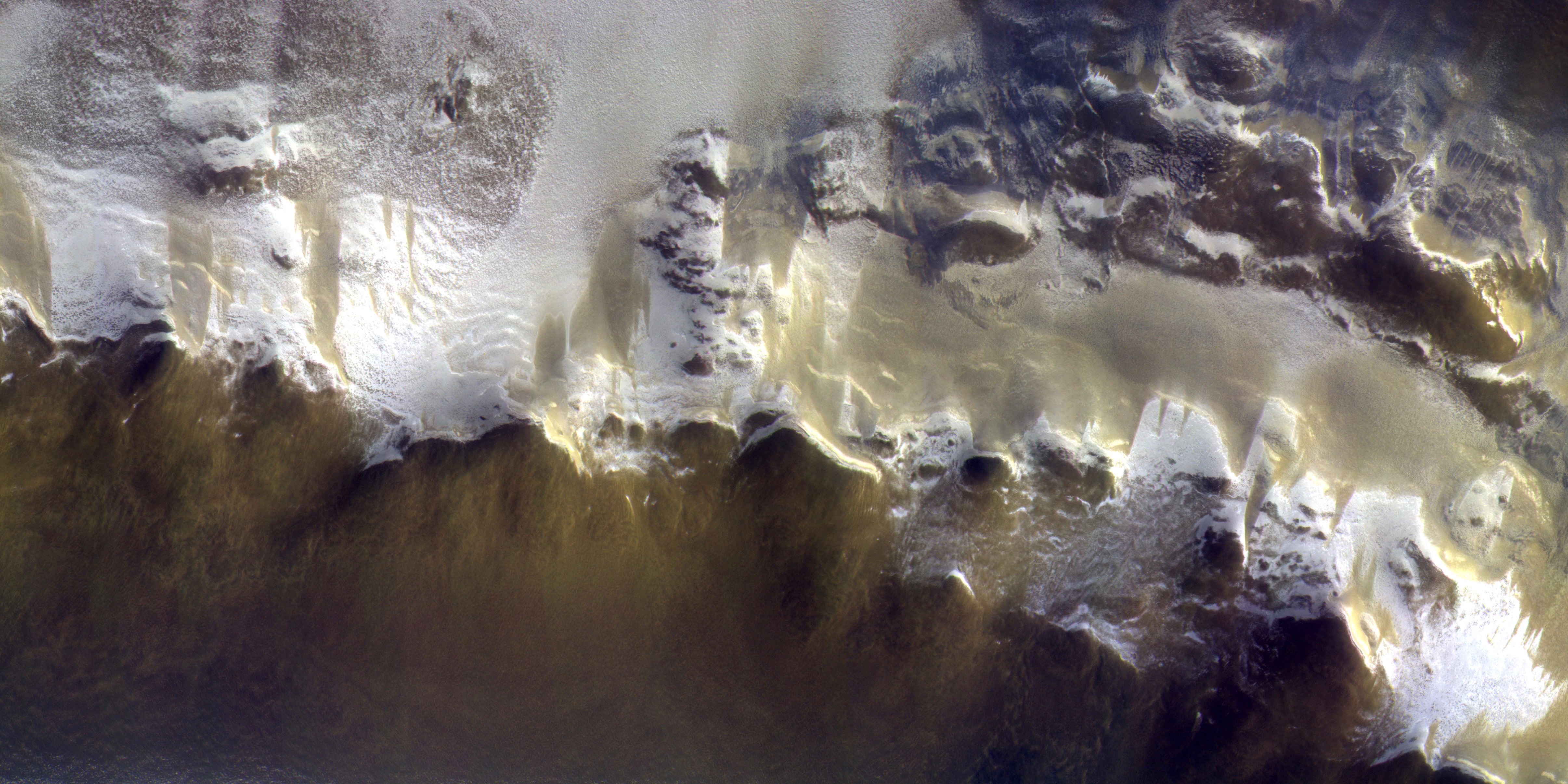CaSSIS sends first colour images from Mars

The Mars camera CaSSIS on the ExoMars Trace Gas Orbiter has returned its first colour images of the red planet. The camera system, which was developed at the University of Bern, is now ready for the start of its prime mission on April 28, 2018.

Image from the rim of Korolev crater (165.9 E, 73.3 N) at 5.08 m/px with a ground-track velocity of 2.90 km/s. The solar incidence angle was 76.6 deg at a local solar time of 07:14:11. © ESA / Roscosmos / CaSSIS
The Colour and Stereo Surface Imaging System (CaSSIS) has been designed by an international team under guidance of the University of Bern. The Mars camera is on board of the ExoMars Trace Gas Orbiter, a European Space Agency/Roscosmos mission. It has now returned its first colour images from the orbit at Mars. The camera system was switched on 20 March and has been undergoing tests in preparation for the start of its prime mission on April 28, 2018.
“We have had a couple of minor software issues in the initial test phase”, says Principal Investigator, Nicolas Thomas from the Center of Space and Habitability (CSH), University of Bern in Switzerland, “but the instrument is actually in good health and ready to work.”
The UniBern team transmitted a completely new software version to the instrument at the start of test phase. “It is amazing that you can totally change the software in an instrument flying around Mars more than 100 million kilometres away and that it works”, says Thomas.
Some of the first images have been spectacular. The example image is from the rim of an ice-filled crater called Korolev at high latitude in the northern hemisphere. The bright material is ice that can be seen on the rim of the crater (which is much larger than the image). The picture has a resolution of just over 5 metres and outperforms the resolution of images from Hubble and other telescopes by far. In the future, CaSSIS should operate from slightly lower altitudes to give resolutions of less than 5 metres.
“We were really pleased to see how good this picture was given the lighting conditions”, says Antoine Pommerol, a member of the CaSSIS science team at the CSH working on the calibration of the data. “It shows that CaSSIS can make a major contribution to studies of Mars’s carbon dioxide and water cycles.”
The image is a composite of three images in different colours that were taken almost simultaneously by CaSSIS on April 15, 2018. They were then assembled to produce this colour view.
“Our aim is to fully automate the image production process”, says Thomas. “Once we achieve this, we can distribute the data to the community quickly for analysis.”
CaSSIS is designed to complement the data acquired by the other payload on TGO and other Mars orbiters while also enhancing our knowledge of the surface of Mars. It is now known that Mars is more dynamic than previously thought. Of particular interest to the 25-strong science team from 9 countries (incl. US and Russia) is the chance CaSSIS offers to study changes that occur over the day and over the Martian seasons. Further studies of recently discovered liquid water on the surface will be one of the main aims.

